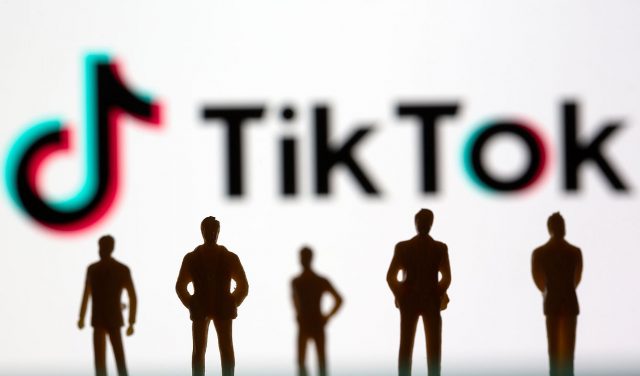Small US businesses fear TikTok ban after it turbocharged sales
LOS ANGELES — Everything changed for Paul Tran and his wife Lynda when the skincare brand they co-founded went viral on TikTok.
The Atlanta couple created @loveandpebble, and when they shared their Beauty Pops ice face masks on TikTok in 2021, it took their small business to another level.
“We sold out all of our inventory,” Paul Tran said, noting that after going viral, the brand was featured on The Today Show, Shark Tank and in mainstream publications.
Now the Trans are worried about a bill passed by the US Senate and signed into law by US President Joseph R. Biden in late April that bans TikTok in the United States if its owner, the Chinese tech firm ByteDance, fails to divest the short video app over the next year. Lawmakers are concerned that China could access data on Americans or spy on them with the app.
A group of TikTok creators sued the US in federal court on Tuesday seeking to block the law and keep the app used by 170 million Americans.
“TikTok has provided a way to the American Dream and this bill is killing that American Dream, my American Dream,” Tran said.
While they tried other apps for their brand, including Instagram and Facebook, it wasn’t until posting on TikTok that the couple found their audience. And they’re not alone.
Many small businesses benefiting from the app’s cultural dominance feel betrayed, as American-owned platforms like Meta, Alphabet and Snap have failed to give them the same prospects of going viral, which leads to more product sales, partnerships and sponsors.
“It’s called #TikTokmademebuyit for a reason,” eMarketer principal analyst Jasmine Enberg said.
“(TikTok) has become the center of the Internet for many young people in particular, and it’s where they go to discover new trends, new products. Brands, creators, and all of that creates this environment of FOMO (Fear of Missing Out) and inspiration really leads to purchase on those platforms, and that really isn’t replicated anywhere else,” she added.
TikTok’s algorithm not only made way for the Tran’s small business to have high audience viewership and engagement, the 2023 launch of TikTok Shop, which enables creators to sell goods directly within the app, “exploded our business,” Paul Tran said.
COMMUNITIES ‘BUILT WITHIN TIKTOK’
Historically, social media platforms like Instagram were more likely to recommend content based on follower engagement. That meant larger accounts could reach the most people, Jasmine Enberg explained, making it harder for small businesses to get their foot in the door.
Small business owner Summer Lucille, known as @juicybodygoddess, toiled for nearly a decade on Instagram and other apps before her plus-size clothing company gained traction on TikTok.
A month after joining TikTok in 2021, she attracted hundreds of thousands of followers, including customers at her physical boutique location in Charlotte, North Carolina, and eventually a television appearance on CBS Mornings.
“I’ve been on other platforms for almost a decade, and they never gave me this opportunity,” Ms. Lucille said. “This is an app that’s not even American. The American apps didn’t give me that same opportunity.”
Felicia Jackson, a Chattanooga, Tennessee, mom, who founded @CPRWrap, a company that sells packaged kits to save lives in the event of a cardiac emergency, said TikTok rescued her business when her presence on other apps including Facebook, X and Pinterest failed to generate sales.
“(TikTok viewers) engage with my content, and they don’t just buy my product. They take the product, buy it, and they take it to other people that they know who take it to their jobs. So, I love the communities that are built within TikTok. No other platform can touch it,” she said.
Rivals have taken notice. Meta’s recent updates to Instagram acknowledge the ways it could improve the experience and performance for small creators.
“Historically because of how we’ve ranked content, creators with large followings and aggregators of reposted content have gotten more reach in recommendations than smaller, original content creators,” according to an Instagram blog post on April 30.
“We think it’s important to correct this to give all creators a more equal chance of breaking through to new audiences.” — Reuters














